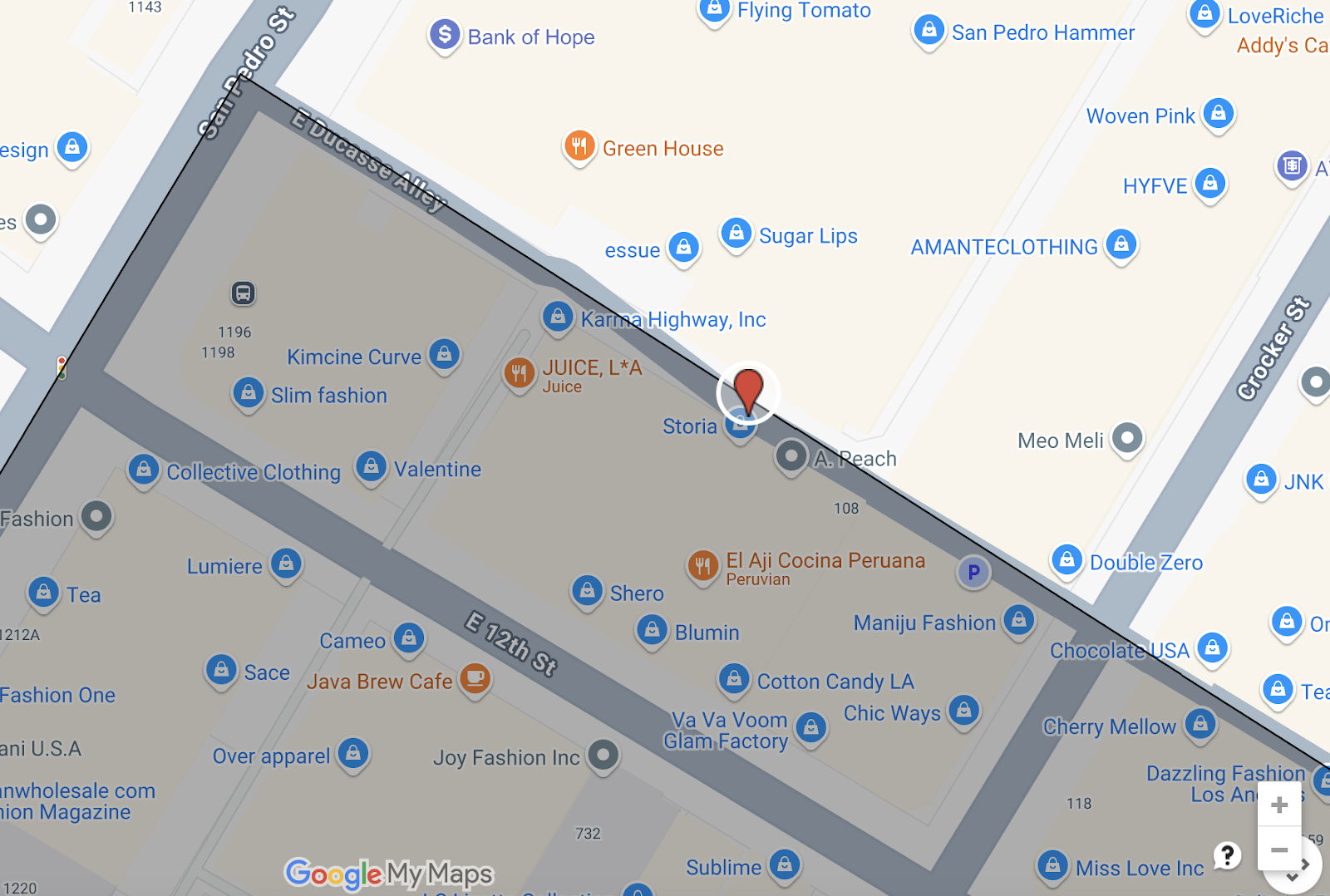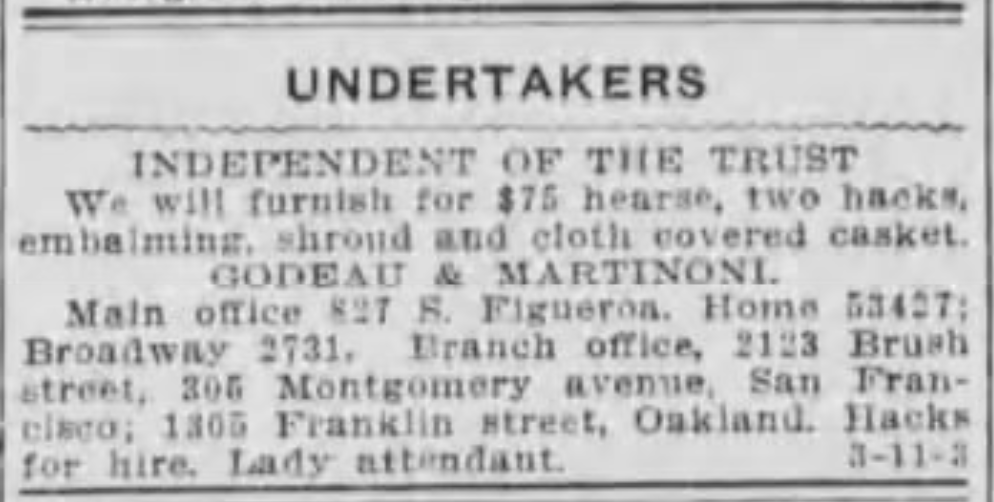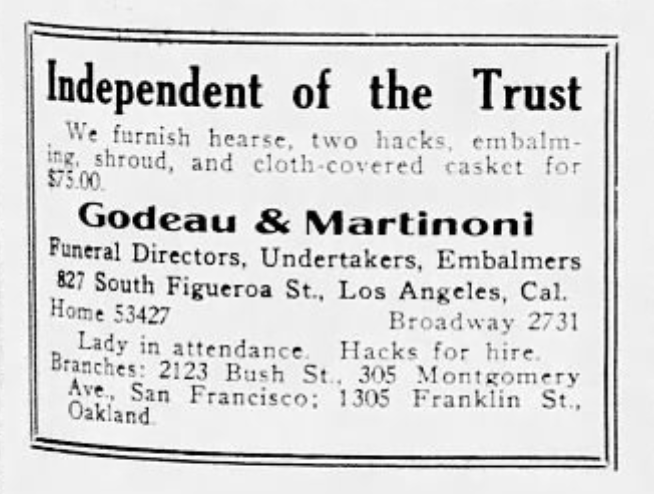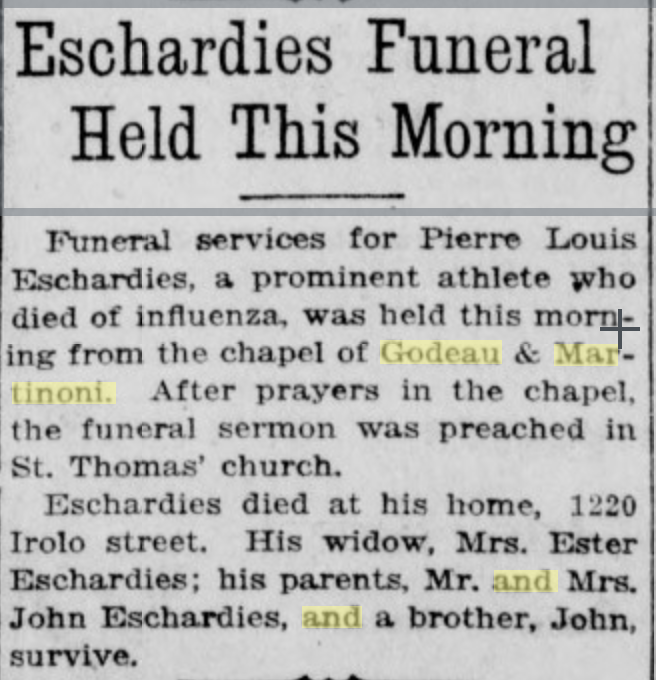It's no secret that some Fashion District businesses are accessible only through alleys. Heck, the Santee Alley is quite well known to locals (and even tourists).
I never noticed that one of the District's alleys had a French name...but in my defense, it doesn't have any signage. You can only see the name on maps.
East Ducasse Alley, which runs from San Pedro Street to Crocker Street between 10th and 12th Streets, is all that remains of the Ducasse Tract. Mark at LA Street Names sent me this map of the Ducasse Tract, surveyed in 1889.
Peter Leon "P.L."Ducasse was born in San Francisco to French immigrants and worked as a court translator, translating both French and Spanish. He was an occasional delegate for the local Democratic Party, a sometime deputy, and a friend of local attorney M.V. Biscailuz. Ducasse was married to a woman named Margaret; they had two children named Grace and Eugene.
Ducasse's mother, Marie Larceval, died in 1886, leaving an estate. The land dubbed the Ducasse Tract was sold by Ducasse to James Pedgrift, John Grant, and James Smith in 1887.
Ducasse made the news a few times: he fought with another interpreter, complained about low wages, and on one occasion was arrested for assaulting a bartender who ejected him from the saloon. (One wonders if he had picked up some of Biscailuz's drinking habits; Biscailuz was known for drinking himself to the point of what a judge called "temporary insanity".)
Ducasse died in 1907 from sarcoma of the neck. It is perhaps fitting that a forgotten man lent his name to an alley that bears no signage to distinguish it from any of the other alleys downtown.












